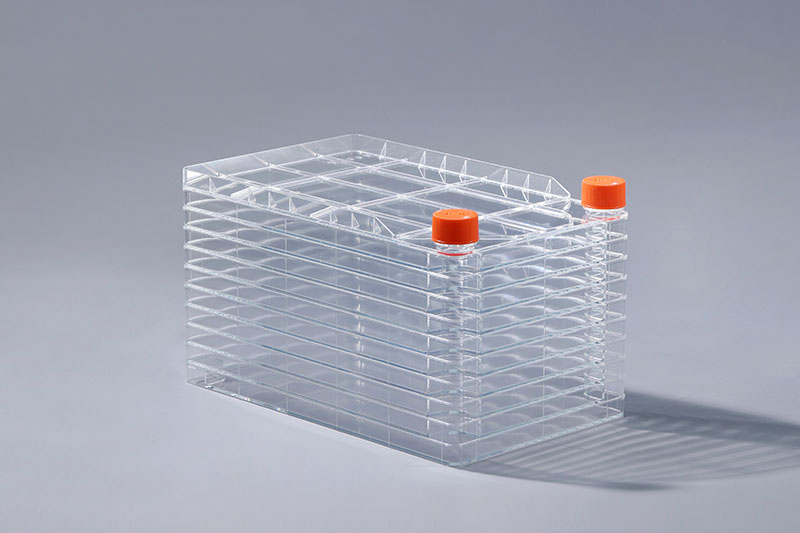Cell culture technology is a commonly used technology in the fields of biopharmaceuticals, monoclonal antibodies, and cell therapy. Cell factories are mainly used for large-scale cell culture. The growth of cells is affected by many factors, of which temperature is a very important aspect.
Under normal circumstances, the suitable temperature for in vitro culture of mammalian and avian cells is 37-38 °C. Too high or too low temperature will affect the growth of cells. The ability of cells to tolerate low temperature is stronger than that of heat resistance. At low temperature, the metabolic activity and nuclear division of cells are reduced. When the temperature is not lower than 0 °C, although it affects cell metabolism, it has no harmful effect; when the cells are placed at 25 to 35 °C, the cells can still survive and grow, but the speed is slowed down; Back to 37 ℃ culture cells can continue to grow.
High temperature is not good for cell culture. Cells are cultured at 39-40°C for 1 hour, they can be damaged to a certain extent, but they can still recover, but they cannot tolerate a temperature increase of 2°C for several hours, that is, if they are cultured at 41-42°C for 1 hour, the cell damage is severe. Most of the cells were killed when the temperature was above 43°C. High temperature mainly causes the inactivation of enzymes, the destruction of lipids, the destruction of nuclear division, the production of coagulase, the coagulation of cells, and the denaturation of proteins. Therefore, the cell factory must maintain a suitable temperature and avoid high temperature when culturing cells.
In conclusion, cell growth in a cell factory is affected by multiple factors, and temperature is only one of them. Others include osmotic pressure, sterile environment, gas, and pH.
The FAI climbed 5.9 percent year-on-year in the first 11 months of 2018, quickening from the 5.7-percent growth in Jan-Oct, the National Bureau of Statistics (NBS) said Friday in an online statement.
The key indicator of investment, dubbed a major growth driver, hit the bottom in August and has since started to rebound steadily.
In the face of emerging economic challenges home and abroad, China has stepped up efforts to stabilize investment, in particular rolling out measures to motivate private investors and channel funds into infrastructure.
Friday's data showed private investment, accounting for more than 60 percent of the total FAI, expanded by a brisk 8.7 percent.
NBS spokesperson Mao Shengyong said funds into weak economic links registered rapid increases as investment in environmental protection and agriculture jumped 42 percent and 12.5 percent respectively, much faster than the average.
In breakdown, investment in high-tech and equipment manufacturing remained vigorous with 16.1-percent and 11.6-percent increases respectively in the first 11 months. Infrastructure investment gained 3.7 percent, staying flat. Investment in property development rose 9.7 percent, also unchanged.
 English
English



















































